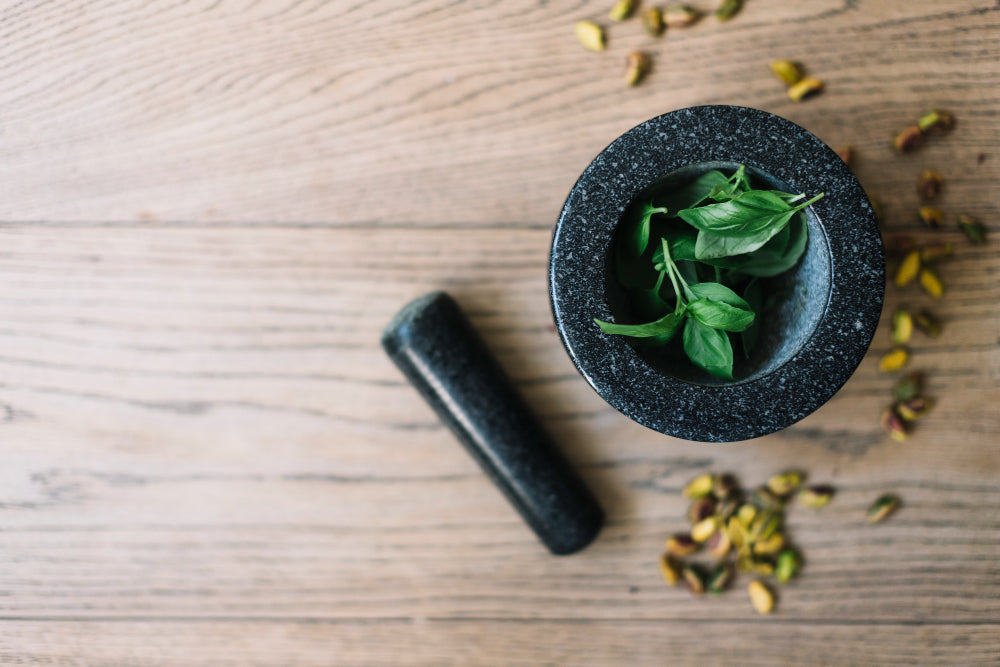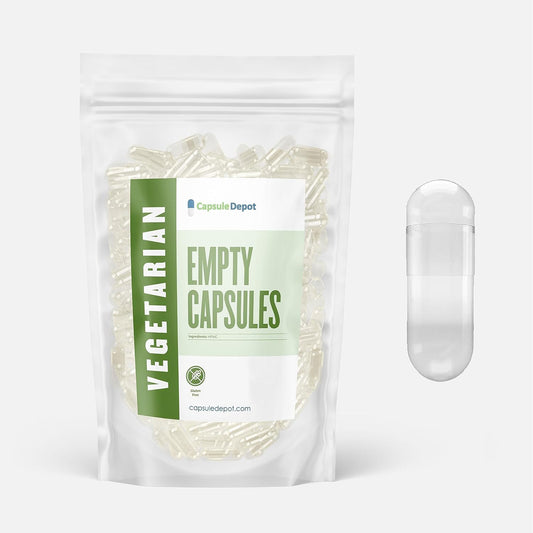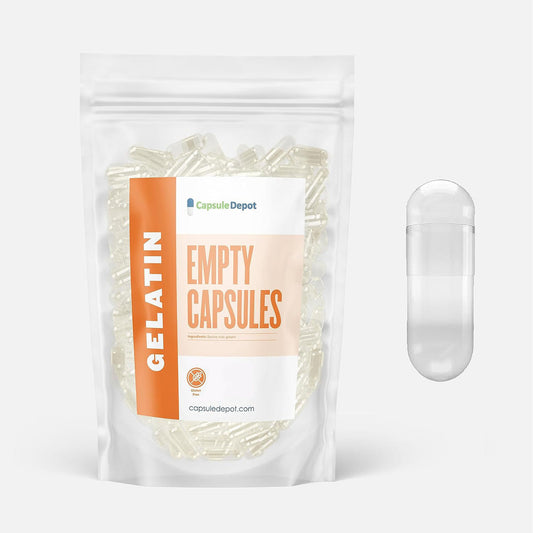Making Your Capsules at Home
Generally, people use capsules as a form of medication due to their ease of consumption and affordability. In addition, these capsules are available in various sizes, shapes, and you can fill
them with a diverse range of substances. Making capsules at home offers a range of benefits and simplicity. This process is relatively simple, requiring only a few basic supplies such as empty capsules, powdered ingredients, and optional tools like a capsule-filling machine. In this article, we will discuss the systematic approach and simple experiments you can easily undertake to create customized capsules in your home.
The Benefits of Choosing DIY Capsules
Making your capsules at home offers several advantages, including cost-effectiveness, customization, and quality control.
- Cost-effectiveness: Making capsules can be more economical in the long run than buying pre-made supplements. You can save money on the cost per dose by purchasing bulk ingredients and empty capsules. Additionally, you can choose affordable ingredients without compromising on quality.
- Customization: One of the key benefits of making your capsules is the ability to customize the dosage and combination of ingredients according to your specific needs and preferences. This process allows you to tailor your supplements to your unique health goals and requirements.
- Quality Control: When you make your capsules, you have complete control over the quality and freshness of your ingredients. You can choose high-quality ingredients from reputable sources, ensuring you get the best possible nutrients.
- Flexibility with Ingredients: You can choose from a wide range of ingredients when you make your capsules. This step allows you to explore and incorporate unique or hard-to-find ingredients that may need to be readily available in pre-made supplements.
- Freshness and Potency: Making capsules ensures the ingredients are fresh, as you can grind them just before encapsulating them. It helps preserve the potency and effectiveness of the ingredients, as vitamins and herbs can degrade over time. Avoidance of Additives and Allergens: By making your capsules, you can control the ingredients and avoid any potential allergens or additives that may not suit you.
- Sustainability: Making your capsules can be a more sustainable option compared to purchasing pre-made supplements. You can reduce waste by reusing your capsule-making equipment and packaging ingredients in bulk.
Essential Tools and Materials for Capsule Making
When making your capsules, you will need several essential tools and materials. The specific tools and fabrics may vary depending on whether you use a manual or machine method. Here is a breakdown of the necessary tools and materials for capsule making:
Manual Method:
- Empty Capsules: You will need empty capsules, which come in different sizes, made from gelatin or vegetarian alternatives like cellulose (HPMC).
- Powdered Ingredients: The ingredients you want to encapsulate should be in its fine powder.
- Capsule Filling Tray: A capsule filling tray is a helpful tool that holds the capsules upright and assists in serving them.
- Spatula or Spoon: You need a spatula or spoon to fill the capsules with the powdered ingredients.
- Small Brush: A small brush can clean any excess powder from the capsules. Scale: A scale is useful for accurately measuring the powdered ingredients.
Machine Method:
- Capsule Filling Machine: A capsule-filling machine assists in filling capsules. It simplifies the process and makes it more efficient.
- Empty Capsules: Similar to the manual method, you will need empty gelatin capsules in the desired size and material.
- Powdered Ingredients: The powdered ingredients you want to encapsulate should be in their fined form.
- Spatula or Spoon: You will need a spatula or spoon to transfer the powdered ingredients into the capsule filling machine.
The Step-by-Step Guide to Capsule Making

Encapsulating herbal supplements at home involves utilizing capsules such as gelatin or vegan to consume specific doses conveniently. Gelatin capsules, which can be soft or hard, are commonly used for their ease of handling and availability. Hard gelatin capsules are preferable for dry, powdery ingredients, while soft capsules are better for liquid or oil-based substances.
However, plant-based vegan capsules, often made from cellulose or starch, suit those seeking vegetarian or vegan alternatives. Here is a step-by-step guide to help you get started:
- Get the necessary materials: You will need the herbs of your choice, empty capsules, a capsulefilling machine (optional), a small bowl or plate, and a clean, dry surface to work on.
- Choose your herbs: Select the herbs you want for your capsules, like turmeric, saw palmetto,etc. Researching and understanding each herb's properties and potential interactions is essential before use.
- Prepare the herbs: If you have dried herbs, ensure you put them in their ground form. A mortar, pestle, or grinder can achieve a fine powder. If you have fresh herbs, dry them thoroughly before grinding.
- Choose the capsule size: Empty capsules come in sizes such as 00, 0, and 1. Select the size that aligns with your requirements and personal preferences.
- Fill the capsules using a manual method or a filling machine.
For manual method:
- Open the empty gel capsule and hold the longer half in one hand.
- Use the other hand to scoop up some powdered herb with the shorter half of the capsule.
- Gently press the shorter half into the longer half to close the capsule.
On the other hand, if you have a capsule-filling machine, follow these tips to fill the capsules:
- Position the capsule machine at the center of a shallow-sided dish. Stack the capsule
- machine base onto the stand and disassemble empty capsules, placing the longer halves in the base opening.
- Next, put the smaller halves on the top of the capsule machine, open side up. Retrieve your powdered herb—just two tablespoons can fill about 24 capsules.
- Utilize a measuring cup or spoon to load the herb into the base of the capsule machine.
- Utilize the machine's spreader card to distribute the powder evenly, then press down with the tamper to pack it into the capsules. Alternate between these steps until the capsules are total.
- Remove excess powder with the spreader card, and consider leaving the capsule tops empty for more accessible encapsulation. Combine the capsule machine's parts, pressing down on the top's center until you achieve good compression.
- Remove the top and pack into the capsules. Hold the machine over an open jar and press down on the back of the top to release the finished capsules into the pot. To complete the process, sprinkle a pinch of the powdered herb onto the capsules and shake the jar for even distribution. This meticulous procedure ensures efficient and well-packed herbal capsules.
- Label and store the capsules: It's essential to label your herbal capsules with the herb name and date of preparation. Ensure you keep them in an excellent, dry location and from direct sunlight.In addition, let them be within an airtight container.
How to Choose the Right Ingredients for Your Capsules

Selecting the appropriate components for your capsules is vital to guarantee the efficacy and safety of your dietary supplements. The selection process entails evaluating elements like the intended health advantages, the harmonious combination of ingredients, and possible interactions. Let's explore specific examples like turmeric, saw palmetto, and Ashwagandha.
Turmeric
At home, you have the option to use either vegetarian empty capsules or gelatin capsules for encapsulating turmeric powder. However, this decision depends on your dietary preferences and restrictions. However, many prefer empty vegetarian capsules made from cellulose or hydroxypropyl methylcellulose (HPMC). For turmeric, size "00" capsules are commonly used and can hold around 600-800 mg of powder.
As for ingredients to mix with turmeric powder before encapsulating, you might consider adding a small amount of black pepper (containing piperine) to enhance the absorption of curcumin, the active compound in turmeric. Some people mix turmeric with a small amount of healthy fat, like coconut oil, as curcumin is fat-soluble.
Saw palmetto
The size of the capsules to encapsulate saw palmetto powder at home includes "00" and "0" tablets. Typically, your height depends on the amount of saw palmetto powder you want to encapsulate and your preference. The composition of capsule ingredients depends on the specific brand and product. In certain instances, saw palmetto capsules may incorporate extra elements such as organic vegan capsules. To ascertain the compatibility of the capsules with your requirements and preferences, perusing the product labels and scrutinizing the ingredient lists is crucial.
Ashwagandha
To encapsulate Ashwagandha powder at home, you'll need a capsule size "00." These capsules are relatively large and can hold a significant amount of powder, making them suitable for herbs and supplements. Regarding the capsule material for Ashwagandha, you can consider vegetarian or gelatin capsules if they align with your dietary preferences. Additionally, ensure the capsules are empty, clean, and dry before encapsulating the Ashwagandha powder. You can use a capsule-filling machine or do it manually with a capsule-filling tray for encapsulation. Carefully fill each capsule with the desired amount of Ashwagandha powder, using a tamper or the back of a spoon to compact the powder for a consistent fill. Once filled, secure the capsules by snapping the halves together. Also, store the encapsulated Ashwagandha in a cool place, shielded from direct sunlight, to preserve its effectiveness. You can customize your capsules with the right equipment, supplies, and techniques according to your needs and preferences. However, a better understanding of capsule filling will help secure your customized capsules longer.
Tips for Efficient and Safe Capsule Filling
Filling capsules effectively and safely requires attention to detail and adherence to best practices.
Here are some tips to help you with capsule filling:
- Follow proper hygiene practices: Before starting the capsule filling process, wash your hands thoroughly to maintain cleanliness and prevent contamination.
- Prepare the filling material: If you use powders or granules, ensure they are appropriately ground and clumps-free. A grinder, such as a coffee grinder or blender, can achieve fine powder consistency.
- Use the correct capsule size: Capsules come in sizes such as 00 or 0. Choose the appropriate size for your needs—capsules from gelatin or vegetarian-friendly materials like cellulose.
- Consider using a capsule filling machine: While not necessary, a capsule filling machine can make the process easier and more efficient. These machines can be found online or at some health stores. If you don't have a capsule-filling machine, you can fill the capsules manually using a small scoop or funnel.
- Ensure accurate dosing: Use a digital scale that measures milligrams to ensure proper dosing. This step will help you achieve the desired dosage for each capsule. Finally, it would help if you learned how to store and use your customized capsules effectively and efficiently.
The Guidelines for Storing and Using Your Homemade Capsules
There are a few essential considerations to ensure maximum efficacy and shelf life when storing and using homemade capsules. Here are some guidelines to follow:
- Proper storage conditions: The storage conditions for your homemade capsules can significantly impact their shelf life and effectiveness. It's advisable to keep capsules in a cool and dry location. This act will protect them from direct sunlight and moisture.
- Use airtight containers: To maintain the freshness and potency of your homemade capsules, store them in airtight containers. Neat glass jars with tight-fitting lids or clean plastic containers with locking mechanisms are good options.
- Get the containers labeled and dated: It is essential to label the containers with the contents, dosage, and date of preparation. It will help you keep track of the capsules and ensure that you use them within a reasonable time frame.
- Follow expiration dates: While homemade capsules may not have official expiration dates like commercially manufactured medications, using them within a reasonable time frame is still essential. The potency and effectiveness of the contents can diminish over time, so it is best to consume the capsules within a few months of preparation.
- Follow dosage instructions: Following the recommended dosage instructions for your homemade capsules is crucial. So, it's expedient for you to consult a healthcare for your dosage.
Common Mistakes to Avoid in Capsule Making
When producing your own capsules, it is crucial to remain mindful of typical errors that may impact the quality and safety of the end product. Here are some pitfalls to avoid:
- Contamination: Contamination can occur during the capsule filling, compromising safety and efficacy. To prevent contamination, ensure that all equipment, surfaces, and hands are thoroughly cleaned and sanitized before handling the capsules and their contents. Use gloves and follow proper hygiene practices.
- Inaccurate measurements: Precision in measuring the ingredients is crucial for consistent dosing and effectiveness. Use accurate weighing scales or measuring tools to ensure the correct amount of each element goes into the capsules. Double-check measurements to minimize errors.
- Inconsistent capsule filling: Inconsistent capsule filling can result in variations in dosage and effectiveness. Pay attention to the uniformity of the capsule fill and ensure you fill each capsule to the desired level. Use proper capsule-filling equipment or techniques to achieve consistent results.
- Incorrect capsule size: Using the correct size can lead to accurate dosing and difficulty swallowing. Make sure to choose the appropriate capsule size for the intended contents. Refer to the capsule size chart or consult a pharmacist for guidance.
- Poor capsule sealing: Improper sealing of capsules can lead to leakage and degradation of the contents. Ensure you tightly seal the capsules to prevent moisture or air from entering. Follow the instructions provided with the capsule-filling equipment or use appropriate sealing methods.
- Lack of labeling: Labelling the capsules can lead to confusion and potential misuse. Clearly label each container or bottle with the contents, dosage, and date of preparation. This act will help you keep track of the capsules and ensure their proper use.
- Ignoring safety precautions: Safety should always be a priority when handling capsules and their ingredients. Avoid inhaling or ingesting the ingredients directly, especially if they are potent or potentially harmful. Use appropriate protective equipment, such as gloves and masks, when necessary.
- Lack of quality control: Proper quality control measures can easily ensure the consistency and safety of homemade capsules. Consider implementing quality control checks, such as visual inspection, weight verification, and periodic final product testing. By being mindful of these common mistakes and taking the necessary precautions, you can improve the efficiency and safety of your capsule-making process.
Our Takeaway
Overall, making your capsules can be a fulfilling and empowering endeavor. By following efficient and safe filling practices, storing capsules properly, and avoiding common mistakes, you can enjoy the benefits of customized supplements, herbs, or medications. It is crucial to prioritize cleanliness and accuracy during the filling process. Proper storage in excellent, dry conditions with airtight containers helps preserve their integrity. Following recommended dosage instructions is essential, and expired capsules should be promptly discarded. Common pitfalls, such as contamination, inaccurate measurements, and improper sealing, should be avoided. Seeking guidance from healthcare professionals ensures safe and effective use of the capsules.
By trying your hand at making capsules, you'll have the freedom to personalize your supplements while maintaining quality and safety standards. So, why not embrace the DIY capsule lifestyle and experience the satisfaction of creating your health solutions?





